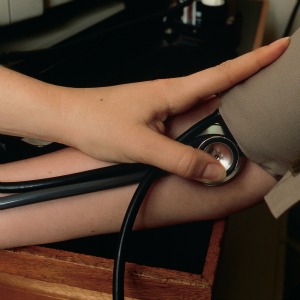Measure blood pressure in both arms to identify more patients at risk of CVD, say researchers

GPs should routinely measure blood pressure in both arms of patients as it could identify those who are at risk of cardiovascular disease, say researchers.
The UK-based team, including GPs from Exeter, found that a difference in systolic blood pressure of 5mmHg or more between both arms was associated with an increase in risk of cardiovascular disease and all-cause mortality by 91% and 44% respectively, compared to patients who had no inter-arm difference.
For patients with an existing diagnosis of hypertension, differences of 5mmHg and 10mmHg increased the risk of death from all causes by 67% and 63%, respectively.
The participants analysed in the study, all living in central Scotland, were originally from a separate clinical trial and had an ankle-brachial index of 0.95 or lower, but were free from pre-existing vascular disease.
The current study, published in the British Journal of General Practice, considered cardiovascular events and mortality in patients after a follow-up of up to ten years, and the team say their findings suggest that current guidance may need to be updated.
The researchers concluded: ‘This analysis has demonstrated that, in a cohort of subjects without clinical evidence of vascular disease at recruitment, an inter-arm systolic difference of 5mmHg or more based on a single pair of measurements, is associated with increased cardiovascular and all-cause mortality.’
They added: ‘Current guidance suggests that an inter-arm difference of <10mmHg can be considered to be normal… This study implies that a new threshold as low as 5mmHg for a systolic inter-arm difference may be clinically important.’
Dr Chris Clark, lead author and GP in Exeter, said the study highlighted the importance of measuring blood pressure in both arms.
He said: ‘Current guidelines state that blood pressure should be measured in both arms when assessing patients for hypertension, but often this advice is not followed due to time constraints or lack of awareness amongst clinicians.
‘This new study confirms that people identified with only a single pair of measurements are still at higher risk of heart disease than those without an inter-arm difference. Repeated assessments to confirm the existence of an inter-arm difference, and suitable lifestyle advice, can then be targeted at individuals identified in this way, and could make a difference to their future health.’
The study follows news that NICE are set to consider new evidence and update their current guidance on blood pressure later this year – including lowering blood pressure targets to 120mmHg.
Visit Pulse Reference for details on 140 symptoms, including easily searchable symptoms and categories, offering you a free platform to check symptoms and receive potential diagnoses during consultations.









